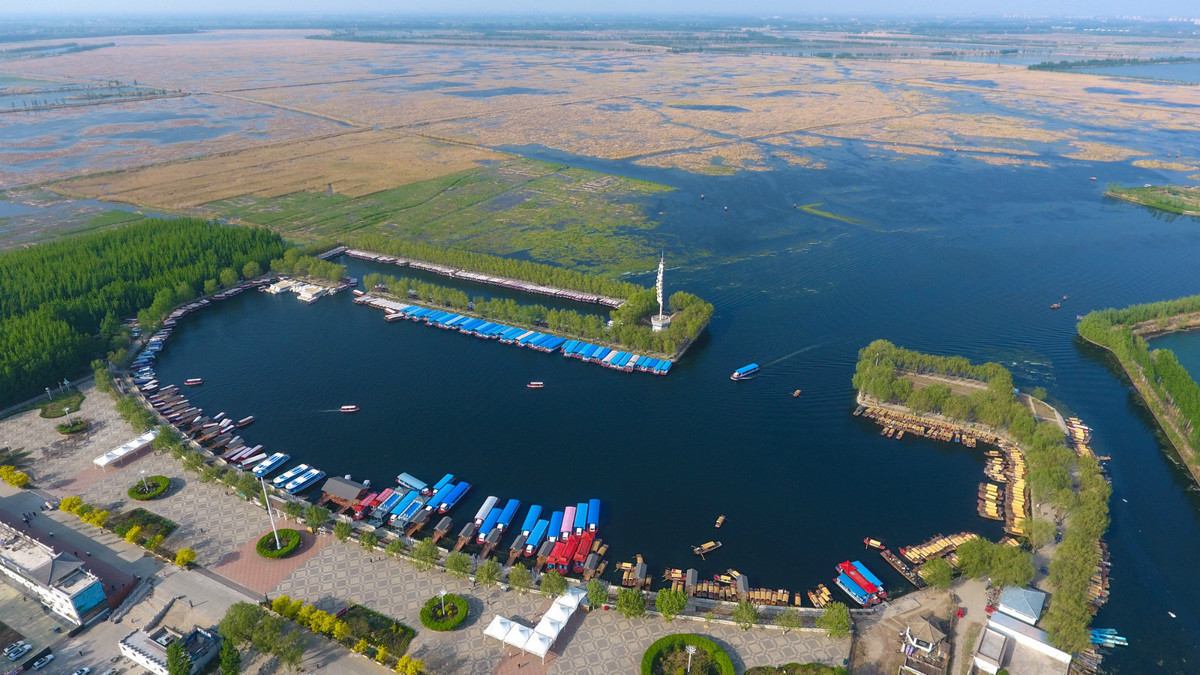Beijing, Tianjin, Hebei central to green efforts


Beijing, Tianjin and Hebei province have advantages in contributing to China's target of realizing peak carbon dioxide emissions before 2030 and achieving carbon neutrality before 2060, as the city cluster possesses innovative talent and resources, experts said.
These three areas, especially the capital, have obvious advantages in science and innovation, and technology is key in the country's efforts to reduce carbon emissions and realize carbon neutrality, according to Yang Kaizhong, a researcher specializing in regional economic development at the Chinese Academy of Social Sciences, who spoke at a forum on Beijing-Tianjin-Hebei integrated development, which was held in Beijing recently.
"Since as early as 2014, the three places have been coordinated to promote environmental protection," Yang said. "China is accelerating the development of city clusters, which will bring crucial opportunities for cities surrounding the capital."
There are many sectors in which Beijing has been cooperating with Tianjin and Hebei, including air quality improvement, green construction, transportation and green finance. Beijing's sub-city center in its eastern Tongzhou district, which is near Hebei, has been playing an important role in the tri-area coordination.
Sui Zhenjiang, vice-mayor of Beijing, said at a recent forum that the sub-city center considers green development as the primary path to high-quality growth, with green energy and green construction being the two major sectors.
Zhao Lei, Party chief of Tongzhou, said a series of major construction projects in the sub-city center has adopted the green concept.
For example, the central green forest park, with an area of 11 square kilometers, was built in the sub-city center and opened to the public in September last year. Also, a smart energy service hub in the center is expected to be one of the first nearly zero-emission construction projects in China.
"We will speed up the development of new energy and renewable energy projects in the construction sector," Zhao said.
Beijing has been removing high-energy consumption businesses out of the city in recent years and developing high-tech and cultural innovation industries, aiming at reducing energy consumption per unit of GDP.
The capital's development and reform commission also announced recently that it will support key technology development involving green innovation efforts.
Through these measures, China has demonstrated its commitment to tackling climate change and promoting greener development in Beijing and its surrounding areas.
On Oct 17, Tianjin, which has been working closely with the capital, unveiled Tianjin Port, which claimed it would be the world's first dock to operate with zero carbon emissions.
Chu Bin, Party chief and president of Tianjin Port Group, said the construction of the dock took only one year and nine months, reflecting "Chinese speed", and that the port would serve as a pioneer model by driving the port cluster in the Beijing-Tianjin-Hebei province to slash carbon dioxide emissions and protect the environment.
Currently, there are five major ports along the 640-kilometer coastline of Hebei and Tianjin: Cangzhou, Huanghua, Caofeidian, Qinhuangdao and Tianjin.
They have inked strategic partnerships in recent years, with Tianjin as the hub, and aim to form an international port cluster.
Led by Tianjin Port, the ports in the region decided to join hands to reduce carbon emissions and participate in other environmental protection work in recent years as part of their strategic goal to create the world-class port cluster.
Their moves include stepping up efforts to transport cargo more by rail rather than by road, and powering berthed ships from the shore instead of using traditional coal or oil onboard.
"During the 14th Five-Year Plan (2021-25) period, the port cluster in the region aims to boost clean energy production and shore power utilization, and strengthen their efforts to prevent water pollution," he said.
MOST POPULAR
- 1 China to continue opening up its mega-market to world: premier
- 2 Policies concerning expats, foreign enterprises in November 2025
- 3 China to enhance convenience for inbound tourism: minister
- 4 Departure tax refund applications surge 285% as inbound tourism rebounds
- 5 China's foreign trade up 3.6% in first 11 months of 2025







